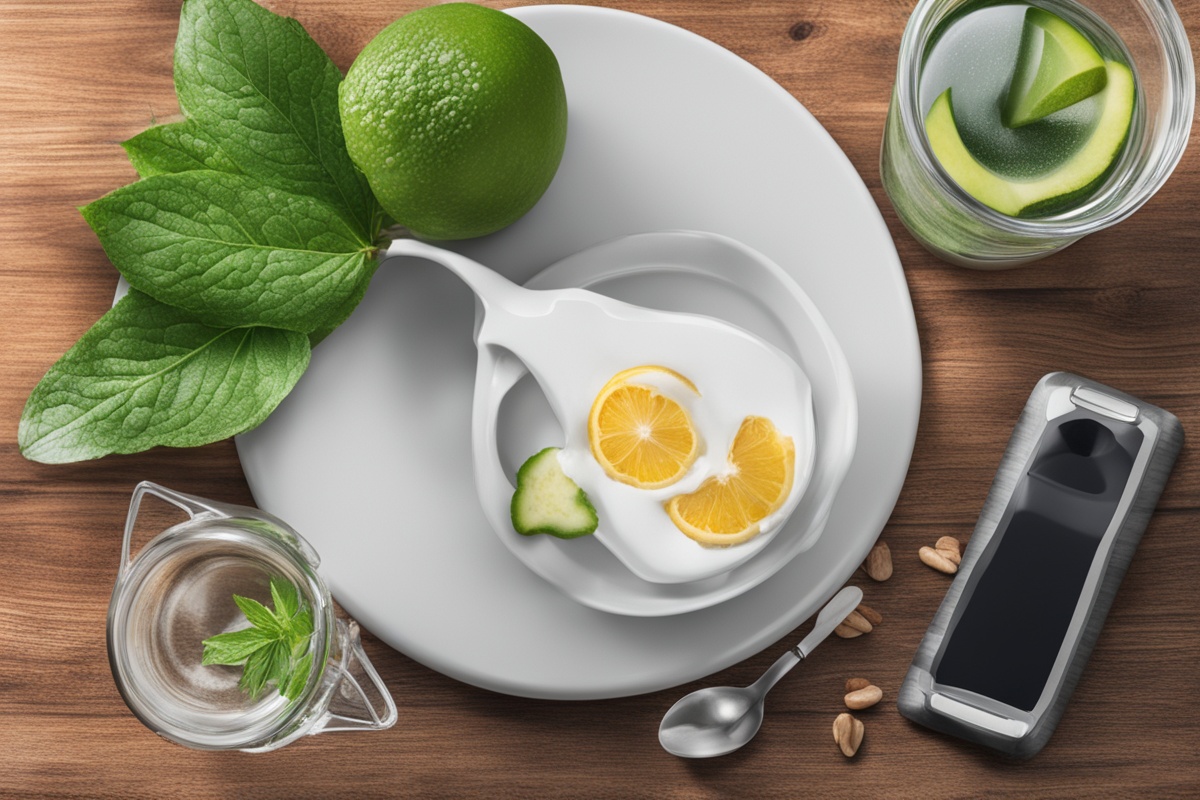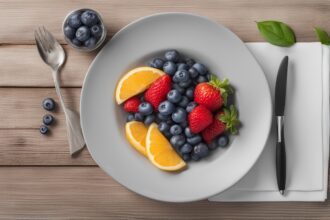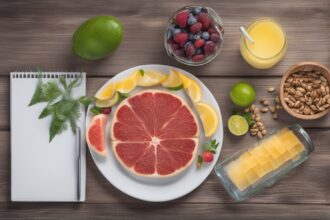Welcome to your go-to resource for mastering fasting with a focus on hydration! If you’re exploring intermittent fasting, extended fasts, or religious fasting practices, having a solid fasting guide is key to success. Fasting isn’t just about skipping meals; it’s a lifestyle choice that, when done right, can offer benefits like improved metabolic health, weight management, and mental clarity. But here’s the catch—without proper hydration, fasting can quickly become uncomfortable or even risky. In this comprehensive post, I’ll walk you through tailored fasting and hydration plans, backed by science, to help you thrive during your fasting journey. Let’s dive into the nitty-gritty of how to fast safely and effectively!
What Is Fasting and Why Does Hydration Matter?
fasting, at its core, is the voluntary abstinence from food and sometimes drink for a set period. Whether it’s the popular 16:8 intermittent fasting method or a multi-day water fast, the practice has roots in both health trends and cultural traditions. The benefits are well-documented—fasting can improve insulin sensitivity, promote cellular repair through autophagy, and even support weight loss (Mattson et al., 2017). But here’s where many people slip up: neglecting hydration. When you fast, your body still needs fluids to function, especially since you’re not getting water from food. Dehydration can lead to headaches, fatigue, and even more severe issues like electrolyte imbalances (Popkin et al., 2010). So, as part of this fasting guide, I’ll emphasize why pairing fasting with a hydration plan isn’t just smart—it’s essential.
Types of Fasting and Their Hydration Needs
Not all fasts are created equal, and each type comes with unique hydration challenges. Let’s break down some common fasting styles and how to stay hydrated during each. For intermittent fasting, like the 16:8 method (fasting for 16 hours, eating during an 8-hour window), you can drink water, black coffee, or herbal tea during fasting hours. Since these fasts are shorter, mild dehydration isn’t usually a concern unless you’re active or in a hot climate. On the other hand, extended fasts (24+ hours) or water fasts demand more attention. Without food, your body loses water and electrolytes like sodium and potassium, so sipping water with a pinch of salt or using an electrolyte supplement can be a game-changer (Institute of Medicine, 2005). Religious fasts, such as Ramadan, often prohibit fluids during daylight hours, making pre- and post-fast hydration critical. The key takeaway? Tailor your hydration to your fasting type for optimal results.
Crafting Your Personalized Fasting Guide: Hydration Tips
Now that we’ve covered the basics, let’s get practical with a fasting guide that prioritizes hydration. I’ve put together some actionable tips to keep you feeling your best, no matter your fasting style. Remember, everyone’s body is different, so listen to your cues and adjust as needed. Hydration isn’t just about guzzling water—it’s about timing, quality, and balance. Here are some strategies to integrate into your routine:
- Start your day with a glass of water before your fasting window begins to prep your body for the hours ahead.
- Carry a reusable water bottle during fasting periods to sip regularly—aim for 2–3 liters daily, depending on your activity level (Sawka et al., 2007).
- Add a pinch of Himalayan salt or a sugar-free electrolyte powder to your water if you’re on an extended fast to replenish lost minerals.
- Break your fast with hydrating foods like watermelon, cucumber, or broth to ease your system back into eating.
- Avoid overdoing caffeine during fasting windows, as it can act as a diuretic and increase dehydration risk (Popkin et al., 2010).
Common Hydration Mistakes During Fasting and How to Avoid Them
Even with the best intentions, it’s easy to make hydration missteps while fasting. I’ve seen plenty of folks (myself included, at first!) stumble here, so let’s troubleshoot some pitfalls as part of this fasting guide. First, underestimating water needs is a big one—many assume they don’t need much since they’re not eating, but your body still requires fluids for basic functions like regulating temperature and flushing toxins. Another mistake is overloading on water right before or after a fast, which can lead to bloating or discomfort. Then there’s the electrolyte oversight; without food, sodium and potassium levels can dip, causing dizziness or cramps (Institute of Medicine, 2005). To help you steer clear of these issues, I’ve compiled a quick list of do’s and don’ts:
- Don’t wait until you’re thirsty to drink—thirst is a late sign of dehydration, so sip consistently.
- Do monitor urine color; pale yellow indicates good hydration, while dark yellow signals you need more fluids.
- Don’t chug large amounts at once—space out intake to avoid stomach upset.
- Do consider herbal teas or infused water (lemon, cucumber) to make hydration more enjoyable without breaking your fast.
Scientific Insights: How Fasting and Hydration Impact Your Body
Let’s geek out for a moment on the science behind fasting and hydration. When you fast, your body shifts into a state called ketosis (after about 12–16 hours without food), where it burns fat for fuel instead of glucose. This process produces ketones, which can suppress appetite but also increase water loss through urine (Veech, 2004). That’s why hydration is non-negotiable—your kidneys are working overtime. Fasting also triggers autophagy, a cellular “clean-up” process, which is great for longevity but requires adequate fluids to support detoxification (Mattson et al., 2017). On the flip side, dehydration during fasting can spike cortisol (stress hormone) levels, negating some mental clarity benefits (Pross et al., 2014). The takeaway? A well-hydrated body maximizes fasting’s perks while minimizing risks. Stick with this fasting guide, and you’ll keep those biological processes humming along smoothly.
Sample Fasting and Hydration Plan for Beginners
If you’re new to fasting, starting with a plan can make all the difference. Below, I’ve outlined a beginner-friendly 16:8 intermittent fasting schedule with a hydration focus, perfect for anyone using this fasting guide to kick things off. This assumes a fasting window from 8 PM to 12 PM the next day, with an eating window from 12 PM to 8 PM. Adjust times to fit your lifestyle, and always consult a healthcare provider if you have medical conditions. The goal is to keep hydration steady without overwhelming your system. Here’s how a day might look: Wake up at 7 AM and drink 16 oz of water with a pinch of salt. At 9 AM, sip 8 oz of herbal tea. By 11 AM, have another 16 oz of water. During your eating window, include hydrating foods like soup or fruit alongside 32 oz more water. Post-dinner, wind down with 8–16 oz before bed. This plan totals about 2.5 liters of fluid, aligning with general recommendations (Sawka et al., 2007). Ease into it, track how you feel, and tweak as needed!
As we wrap up this fasting guide, I hope you feel equipped to tackle fasting with hydration as your secret weapon. Whether you’re aiming for weight loss, mental focus, or spiritual growth, pairing a thoughtful fasting plan with consistent fluid intake can transform your experience. Remember, fasting isn’t a one-size-fits-all deal—experiment with different styles, listen to your body, and prioritize water and electrolytes to stay safe. I’d love to hear about your fasting journey or any hydration hacks you’ve discovered, so drop a comment below. Here’s to fasting smarter, not harder, and unlocking the full potential of this powerful practice!
References
- Institute of Medicine. (2005). Dietary Reference Intakes for Water, Potassium, Sodium, Chloride, and Sulfate. National Academies Press.
- Popkin, B. M., D’Anci, K. E., & Rosenberg, I. H. (2010). Water, hydration, and health. Nutrition Reviews, 68(8), 439–458.
- Pross, N., Demazières, A., Girard, N., et al. (2014). Effects of changes in water intake on mood of high and low drinkers. PLoS ONE, 9(4), e94754.
- Sawka, M. N., Burke, L. M., Eichner, E. R., et al. (2007). American College of Sports Medicine position stand: Exercise and fluid replacement. Medicine & Science in Sports & Exercise, 39(2), 377–390.
- Veech, R. L. (2004). The therapeutic implications of ketone bodies: The effects of ketone bodies in pathological conditions. Prostaglandins, Leukotrienes and Essential Fatty Acids, 70(3), 309–319.






